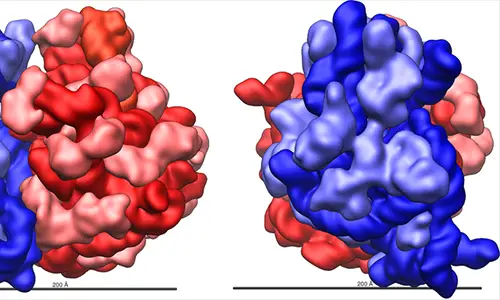The human body is made up of millions of cells that are grouped together to form tissues and the organ systems. These cells are further made up of tiny components called the cell organelles.
Every organelle is unique in its function thus making the cell the fundamental building block in the body.
One of the important cell organelles in the Prokaryotic and Eukaryotic cell is the Ribosome, which helps in Protein synthesis. They were discovered by the Romanian cell biologist George Emil Palade.
Ribosomes are found both free in the cytoplasm or attached to the Endoplasmic reticulum(ER), to form rough endoplasmic reticulum. It is estimated that there are nearly 10 million ribosomes in the cell.
They are also found in mitochondria and chloroplasts of Eukaryotic cell.
Ribosomes are made up of ribosomal proteins and ribonucleic acids. Although bound by a membrane, they are not classified as membranous.
Facts about Ribosomes are as follows:
1. Ribosomes have two subunits.
Ribosomes comprise of large and small subunits. These two subunits join together when the ribosome attaches to messenger RNA (mRNA) during protein synthesis. This is also known as the active ribosome.
2. The size of the Prokaryotic and Eukaryotic ribosome are slightly different.
In Eukaryotes, the co-efficient of ribosomes are 80s, of which is divided into 60s for the large, and 40s for the small subunit. In prokaryotes, however, the large and small subunits are split into 50s and 30s, making a total of 70s respectively.
3. Ribosomes have temporary existence.
Once the ribosomes have synthesized a polypeptide, the two subunits separate and are either reused or broken down.
4. Ribosomes contribute to cell mass.
Ribosomes make up a large part of cells in many species, which leads to protein manufacturing. For example, in E.Coli (bacteria), they make up about 1/4 of the total cell mass.
5. Functions of Prokaryotic and Eukaryotic ribosomes are the same.
Both Prokaryotic and eukaryotic ribosomes perform the same functions and demonstrate the same set of chemical reactions, and are not fundamentally different. It has been found that eukaryotic ribosomes are able to translate bacterial mRNAs correctly. The genetic code is also the same in all living organisms.
6. The proteins in Eukaryotic and Prokaryotic ribosomes are different
Eukaryotic ribosomes are much larger than the prokaryotic ribosomes. Most of their proteins are different.
7. Different antibiotics inhibit Prokaryotic and Eukaryotic ribosomes
Antibiotics such as chloramphenicol inhibit Prokaryotic but not Eukaryotic ribosomes. Cycloheximide inhibits protein synthesis in Eukaryotic ribosome.
8. Antibiotics can also target specific subunits of Ribosome
Some antibiotics target specific subunits of the ribosome or may target the entire ribosome completely. Erythromycin targets the 50s ribosome. It blocks the translocation reaction on ribosomes. Other antibiotics that interfere with the ribosome to synthesize proteins include Rifamycin, Puromycin and Anisomycin.
9. Regulation and control of ribosomes have been studied in E.Coli.
Ribosomal regulation is carried out by direct regulation of ribosomal protein synthesis. The bacterial cell avoids overproduction of ribosomal proteins, as this can cause a loss in energy and information. As a result, the ribosomal proteins must be synthesized in the amount required for ribosome assembly. The coordinated levels of production of nearly all ribosomal proteins are achieved by approximately 16 independent operons, scattered throughout the cell genome. There is translational feedback control and when there is an overproduction of ribosomal protein, it goes back to repress the operon that is activated, and stops further production.
10. The key catalytic activity of the ribosome (Creation of a peptide bond between two amino acids) comes from its RNA component.











Leave a Reply